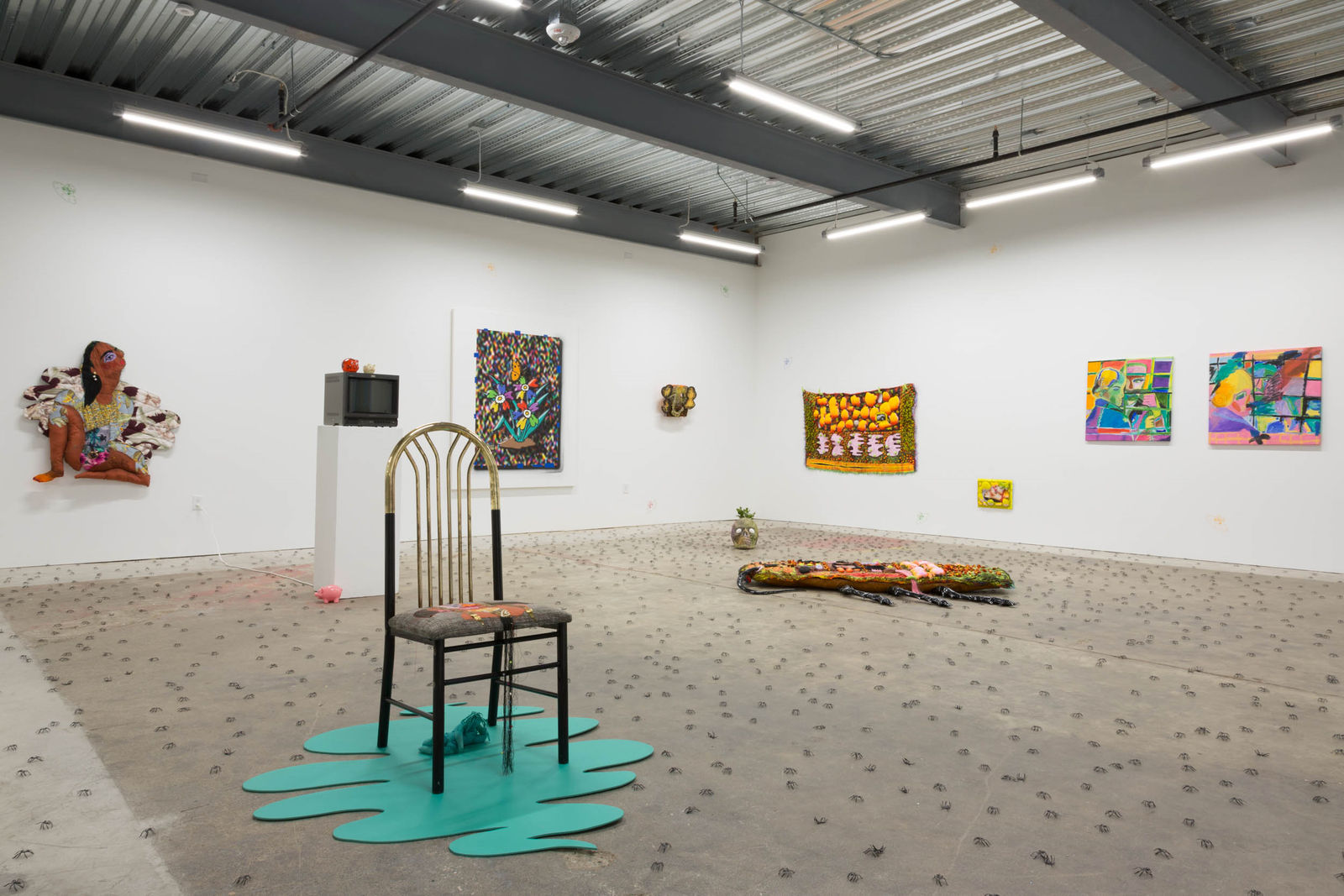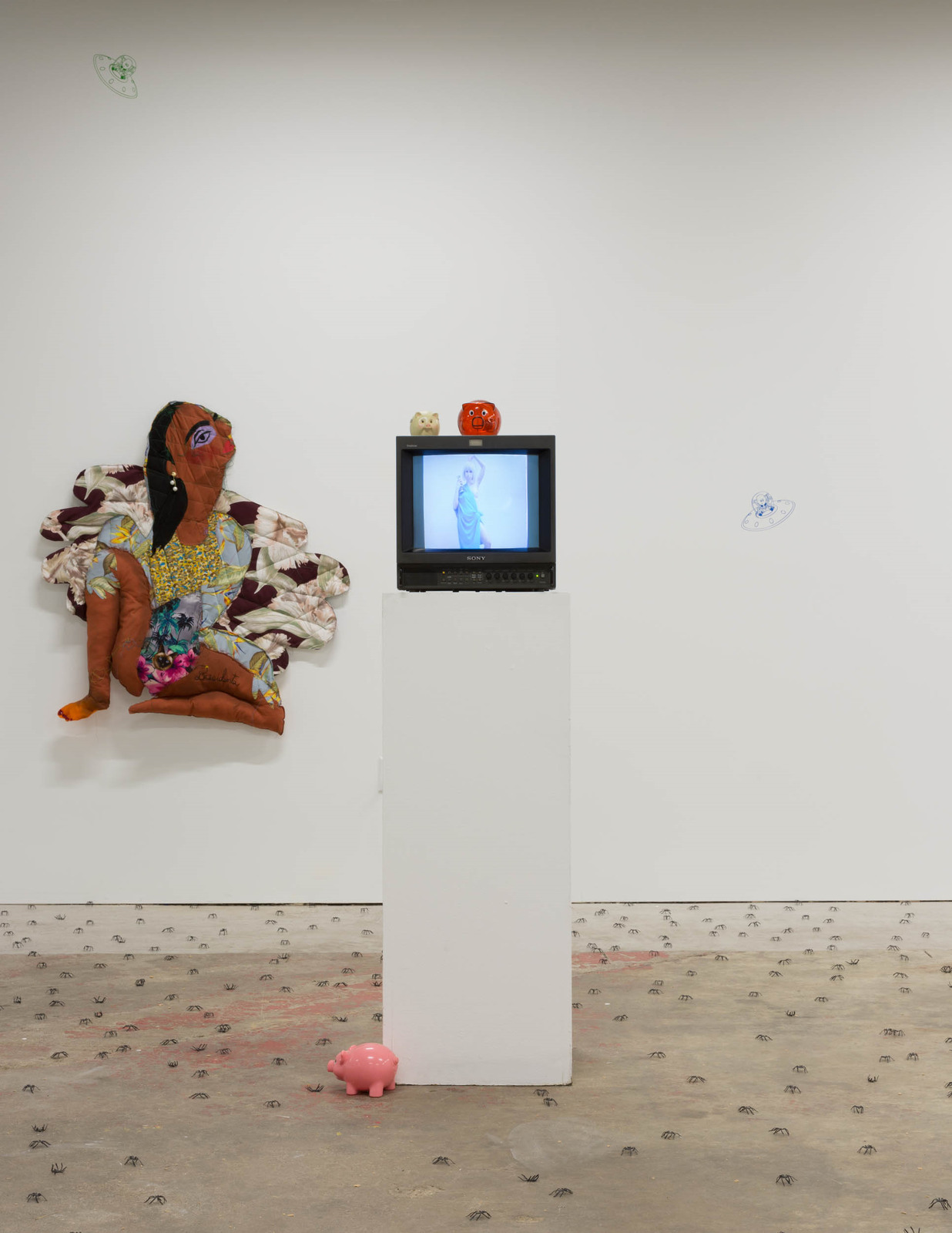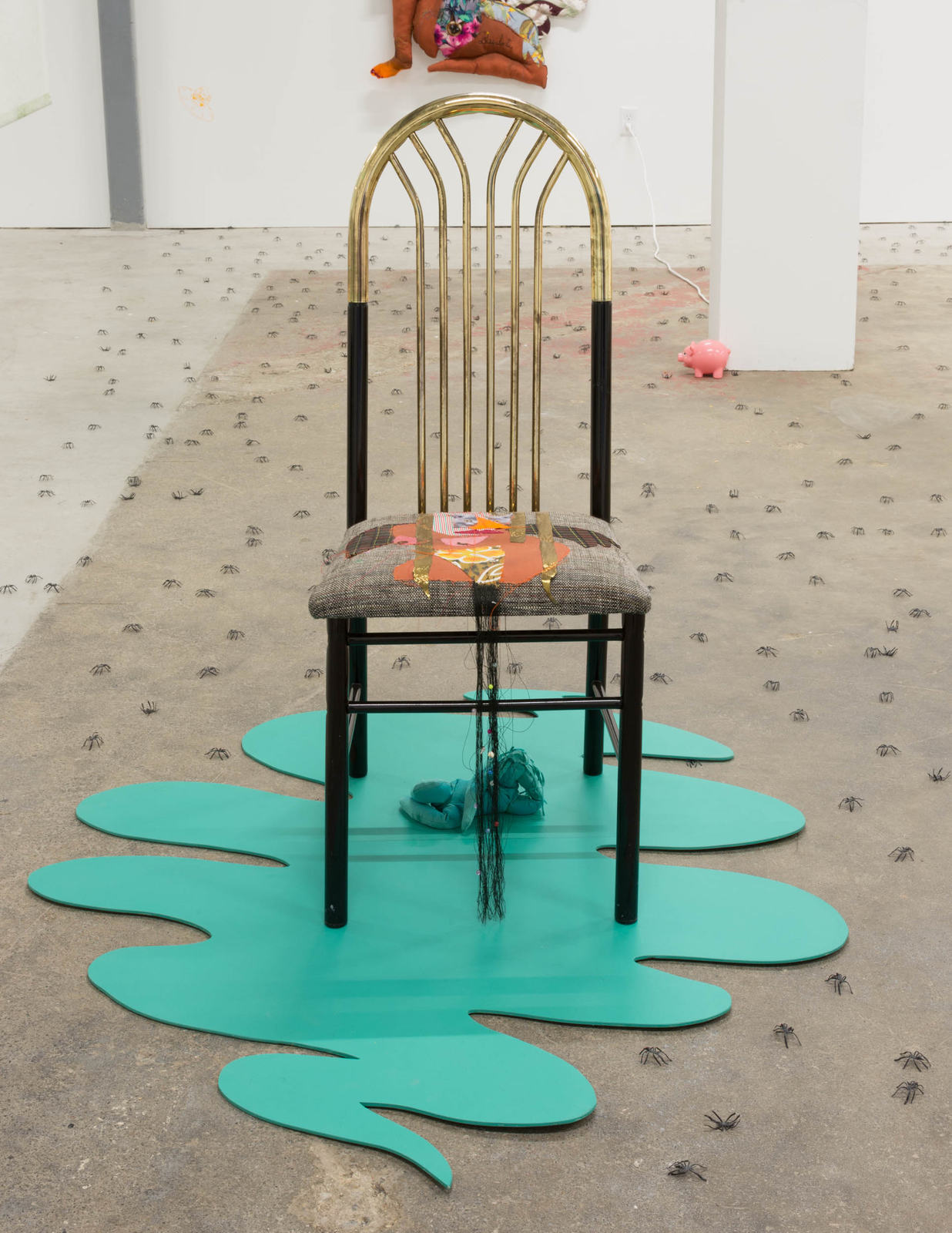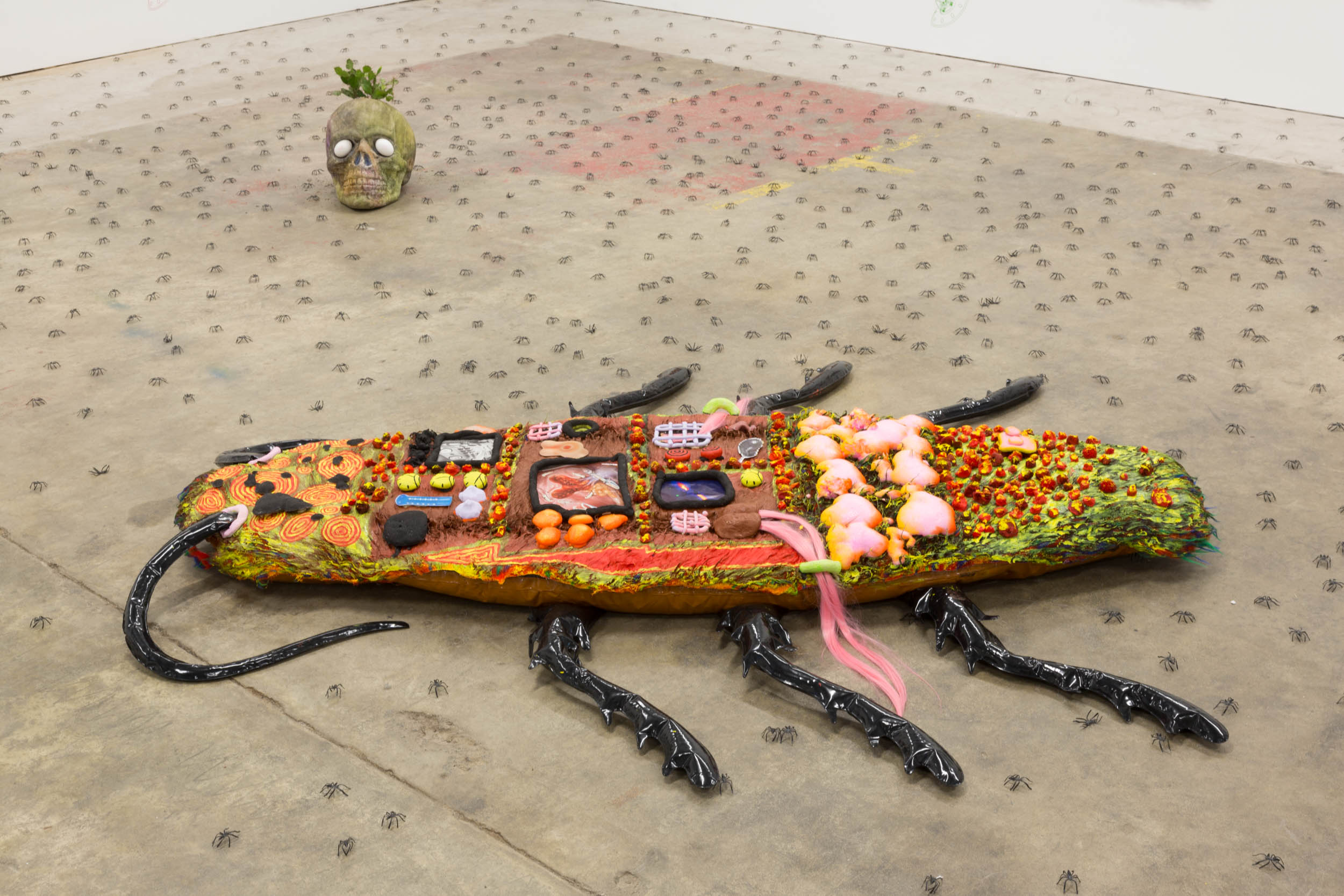Mallrats: Viewership in the Era of the Art Fair
/Why is it that malls are the place where culture goes to die? What are those qualities that feel so coarse and disingenuous? The mall is a brick-and-mortar behemoth of banality and excess—a true testament to the lowest common denominator of taste. That unique eau de toilette of pruned pennies sunken to the bottom of indoor fountains that all malls tend to share, the exhausted conveyor belts of overworked escalators, the excessively buffed floors on the brink of acne, employees visibly bored, chain stores indifferent to the places they inhabit. The whole operation is enthusiastically apathetic, as everyone inside secretly searches for the nearest exit.
All the work is done for you; all you need to bring is the debit card. We don’t go to the mall to be inspired or challenged. We don’t go to think harder and see deeper. We go to consume - quickly and in excess. We go to embrace the bland and fall in the routine of the predictable – walls of sneakers and flat-brimmed hats, entryways that blast cologne and air conditioning, and the toothpick reward of skewered chicken teriyaki samples. The mall is a banal quest with price tagged prizes: Cheddar Mecca for the consumer mouse, looking for the newest merchandised cheese.
Those who frequent the mall— mallrats—occupy a special place on our spectrum of low culture. A mallrat has an indoor swagger— their head on a constant swivel, overly concerned with footwear, experts in food court geography, easily succumbing to the retail vice, the destination closets for sweatshop production. Mallrats, as it happens, is also the name of a recent collaborative exhibition[1] between Et Al Etc. and 100% Gallery at Minnesota Street Project (MSP) in San Francisco. The title of which seems to be a biting allegation to the larger space the show exists within, and perhaps to the state of art viewership in the era of the art fair.
Minnesota Street Project, San Francisco, CA, 2016. Source: https://www.fastcoexist.com/3059359/this-clever-new-business-makes-art-studios-affordable-in-san-francisco
Cynics have dubbed MSP a new type of “art mall” —a permanent building that houses about a dozen galleries that cater to a variety of audiences. The space calls to mind the open, flexible structure of an art fair - a wide open atrium with galleries surrounding on all sides. A second floor provides more gallery spaces with a balcony that allows visitors to look down below.
Spearheaded by Silicon Valley Venture Capitalist power couple Andy and Deborah Rappaport, the converted warehouse aims to provide a defibrillator blast to the pulse of San Francisco’s visual arts. Indeed, MSP has done wonderful things for the arts community. The Rappaport’s investment and generosity to the project has strengthened sectors of the artistic community, and helped bail out some galleries struggling with space, rent, and exposure. This space is now critical to the well-being of the local art scene.
Since its opening in March of 2016, the project has garnered a lot of attention – presented as a savior to the evaporation of San Francisco galleries due to rising rents. However, this model for art viewing did not spring up out of nowhere. MSP is the updated version of what once occupied the downtown 49 Geary group of galleries, which still hosts a handful of quality art spaces in San Francisco under one roof.
It is convenient and logical to house galleries together - openings typically happen on the same nights and audiences tend to overlap. Why not combine resources and allow viewers to see several exhibitions at once? This train of thought is essentially behind the formation of art fairs - two of which (FOG and Untitled,Art) set down in San Francisco this weekend[2]. The more art assembled in one space, the more worthwhile the experience can be for viewers. But where does that line of thinking start to reach a threshold?
From the beginning, the reception of MSP from the arts community has been both excited and skeptical. New art spaces are almost always a positive, but Minnesota Street Project is a different kind of animal. Frankly, it’s a business – the same way other commercial galleries are, but the conglomeration of galleries makes MSP big business for the gallery world – a supermarket, a shopping mall. The events that flex the new art-hub muscle the strongest are the nights that the space reached capacity, and the opening weekend, which drew lines that snaked around the block, offered an optimistic vision of San Francisco’s artistic future. Programs like Southern Exposure’s Monster Drawing Rally, as well as the inaugural SF Art Book Fair, also drew massive crowds, providing tons of exhibited and affordable content from local artists. The rotating project-spaces have also presented some exciting shows from a diverse supporting cast[3].
San Francisco Art Book Fair, Minnesota Street Project, San Francisco, CA, July, 2016. http://www.parklifestore.com/
When speaking about MSP, Deborah Rappaport has said the Minnesota Street Project provides a “San Francisco solution for a very San Francisco problem.”[4] That SF problem being a high demand for space which has resulted in stratospheric rent prices. The key feature of the ‘solution’ is a communal storage space for all galleries involved, as well as offering artist studios at fixed prices below market rate. Another part of this San Francisco solution is a steadfast faith in the success of San Francisco arts provided that there is enough capital to secure that success— a sentiment which may sound eerily similar to the motto of many venture capitalist-funded start-ups.
At its best, Minnesota Street Project provides galleries with the space to put on bold, provocative, imaginative, and ambitious shows. There is the feel of a subliminal safety net underneath the galleries housed in MSP, with larger and more diverse audiences almost guaranteed as tenants benefit from more foot traffic than in their previous residence. For some of these galleries, exposure and open hours were the biggest obstacles before their move – especially those who used to be tucked out of sight in their old locations[5]. A handful of other spaces came from 49 Geary, the veteran gallery nucleus of San Francisco that has gone through turbulent times recently in regard to rent prices and gallery turnover. A few features of the MSP warehouse were designed with a keen foresight into what makes an art space successful. The video room is a nice addition, as well as the wooden bleacher stairs for seating and artist talks. When the atrium functions as a space for work to be shown (and not as a rental space for wealthy private parties), the results are ambitious and memorable.
Et Al Gallery (without the Etc.) exists in the basement of a Chinatown Dry Cleaners. 100% Gallery (which often goes simply by the emoji) runs out of an apartment bedroom in the Mission. For their show Mallrats, they shared primetime first-floor real estate in Minnesota Street Project. So what does it mean when a gallery like 100% has the curatorial savvy to land a show in MSP, and then calls it Mallrats? And what does that say about those who support the arts and come to see these shows? Have art viewers become the low cultured mallrats? The claim is borderline blasphemous to those who pride themselves on avanting the garde. If viewers have no place else to go besides MSP, then they must in fact be the besmirched titular Mallrats of 100% Gallery. Has Minnesota Street Project, in some perverse way, made it too easy to be an art viewer?
This is where the real friction begins between art spaces. Space has always been an issue in this city and there is a rich history of alternative approaches to exhibit work. There is a steady and persistent showing of work in apartments, garages, attics, backyards, sheds, storage containers, pop-up shops, and storefronts from emerging to established alternative spaces[6]. Work made and shown from the garbage, on the street, or the side of the freeway is ultimately canonized in the Bay Area[7]. So when the next new move in the arts for San Francisco is a clean, sterile warehouse pilgrimage site, it may be met with some resistance by those who have a bit more dirt under their fingernails.
MSP’s origins come through the channels of the tech world. The project’s vision comes from tech, and is more closely aligned with the tech sphere of San Francisco than the city’s tradition of alternative spaces. This is not an insult. In relation to the way other art spaces are started, MSP has taken an unconventional approach, but it also rubs some art purists the wrong way. Lots of art spaces are built on blood, sweat, tears, luck, and a few post-dated checks. Minnesota Street Project is a major feat and most certainly required lots of people working incredibly hard, but embedded in its story is a wealthy art patron. However gracious the arts community is about the Rappaport’s generous contributions, the space itself lacks the individuality that these galleries once had. Minnesota Street Project is a blockbuster among art-space indies, and on some level, it is a keen investment from successful venture capitalists[8].
But Minnesota Street Project is here to stay, and supporters of the arts will find themselves there again and again - sometimes inspired, sometimes disappointed. Either way, MSP is cemented in its dedication to San Francisco’s artists and galleries. More non-committal art viewing formats such as the recent arts fairs FOG and Untitled bring a temporary snort of gusto to the city’s art scene. Packing piers with booths, these events definitely draw the crowds, but what we leave remembering or talking about is typically surface level.
Most attendants forego talking about individual work, with the exception of one or two memorable pieces, and instead focus on the quality of the entire fair. While this provides a broader view of trends and developments happening in art on the West Coast, it is a shift in the way galleries and artists would typically wish for a viewer to experience artwork. Through this model, viewers become harder to convince, more inclined to snap a photo, and compelled to move on to something that could be more interesting. Ideally this shift gives the viewer more agency, but in reality it tends to leave us situated right below satisfied. Unfortunately, this shift may travel back into the galleries once the fairs leave town, especially as fairs become a dominant force in the way we experience art and as the format bleeds into the fabric of our more permanent art spaces.
So the question becomes: should this even be something artists are chasing? Should San Francisco artists be clamoring to show work in Minnesota Street with a price tag a little higher than when they were showing on O’Farrell Street? And, as a gallery, how do you maintain your edge moving from the street to the mall? This can be seen as a sign of progress and success, but how do you host a show and sell all the work without selling out? What is really at stake when you don’t face the full responsibility of keeping the lights on and how do you keep taking risks?
While Minnesota Street Project has provided tremendous strides forward for the arts in San Francisco, its continued growth is dependent on the weird, the ambitious, and the visionary, as well as the bold and individualistic, the imaginative and idiosyncratic. MSP’s growth is dependent on San Francisco’s artists and gallerists, and the dedication that our mall could produce some pretty fucking radical mallrats.
-
Mallrats ran from 8/27/16–9/24/16 http://etaletc.com/#/galleries/3/shows/44. ↩
-
FOG at Fort Mason from 1/12/17–1/15/17 and Untitled at Pier 70 at Pier 70 from 1/13/17–1/15/17 ↩
-
Gallery 16 during the Art Book Fair; Anton Kern/Andrew Kreps from New York had a strong temporary west coast show in May as SFMoMA reopened; Christie’s Auction House exhibited some heavyweight names (with nosebleed prices); a dynamic group show from the Minnesota Street Studio program titled, I Never Learned the Title of the Song I Always Sing, which gave viewers a glimpse into what happens in the other Minnesota Street warehouse ↩
-
http://minnesotastreetproject.com/news/minnesota-street-project-new-art-center-san-francisco ↩
-
Rena Bransten in an awkward space on Market Street, Ever Gold deep in the Tenderloin, Et Al in a Chinatown Dry Cleaner’s basement (still in operation), Bass & Reiner accessible by elevator through an unassuming Mission doorway ↩
-
http://www.curiouslydirect.com/single-post/2015/05/19/Backyard-Galleries ↩
-
Recology Artist in Residency Program, The Mission School, Emeryville Mudlfats ↩
-
The Dogpatch neighborhood where MSP is located has been an up-and-coming neighborhood for quite some time. This new art hub will only help increase the value of real estate in the area ↩








